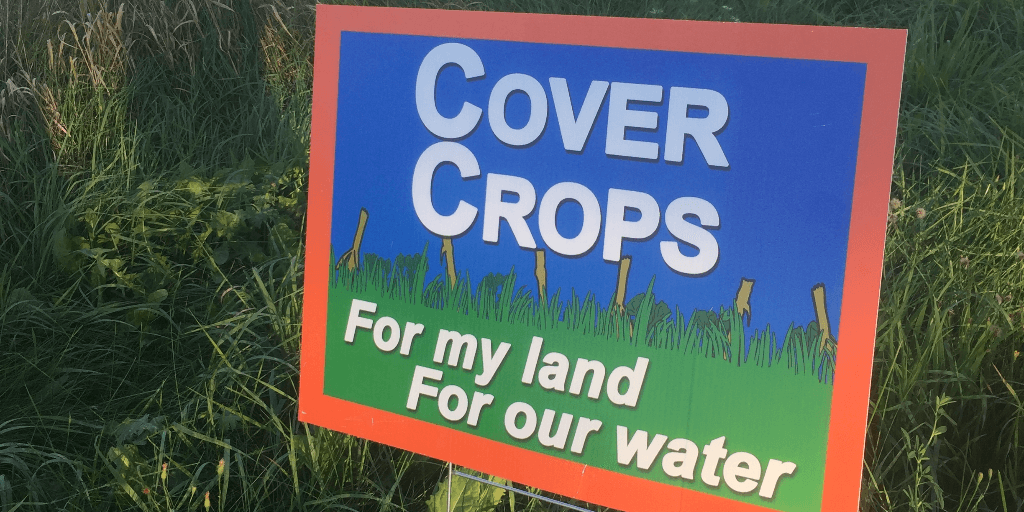NEWPORT — More than 5,000 acres of corn fields will be planted with a cover crop in Orleans County this fall, and thousands of more acres received other conservation practices such as no-till planting and conversion to grass crops.
New roadside signs are helping to highlight this work that can be otherwise very hard to notice.
There are four different signs, “Cover Crop,” “No-Till Planting,” “Growing Grass” and “Stream Side Planting.”
They all share the tagline, “For my land. For our water,” because these conservation practices usually improve the health of soils and crops, as well as protecting water quality.
“Most people don’t realize that a lot of farmers here are already doing a good deal of work for soil conservation and water quality,” said Sarah Damsell, who assists farmers with many of these practices through her role at Orleans County Conservation District.
Cover cropping, or “green manure,” is the practice of growing plants for the purpose of covering the soil, especially through the late fall, winter and spring, when many fields would otherwise be bare.
The plants protect the soil from erosion and build soil organic matter, retaining valuable soil in fields and keeping it out of waterways.
Cover crops also hold nutrients through the winter and release them in the spring, providing a boost to the spring crop and reducing the potential for nutrients to leach from the soil during the winter.
Perennial crops improve soil health and water quality because they have deep roots, diverse plant mixes, and never leave the ground uncovered.
Although the signs simply name “grass,” farmers usually grow a diverse mix of grasses and legumes.
This hay and pasture is an important forage source for most farmers, and many Vermont farms don’t grow anything but perennial grass-legume crops.
Farmers who do grow annuals, however, plant grass crops in strategic areas like along streams, in steep areas, through low-lying swales, and in contoured strips.
In all of these places, the grass crop serves to prevent sediment and nutrients from leaving fields and entering streams.
No-till planting is a method used to plant and grow a crop such as corn while leaving a year-round cover of living or residual plant material on the field.
The practice boosts soil organic matter, increases soil tilth and infiltration, and protects the soil from erosion.
While the benefits are significant, the learning curve can be a challenge.
The practice is catching on.



